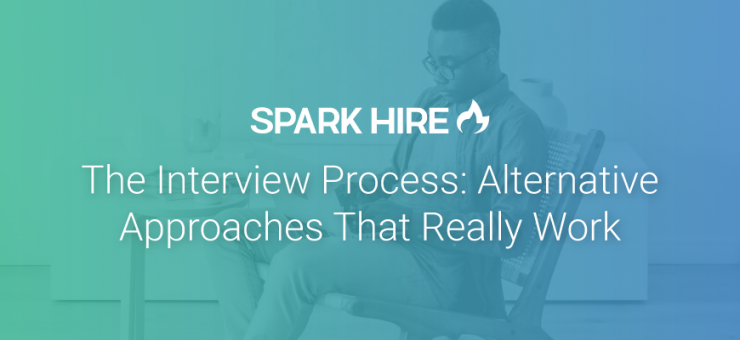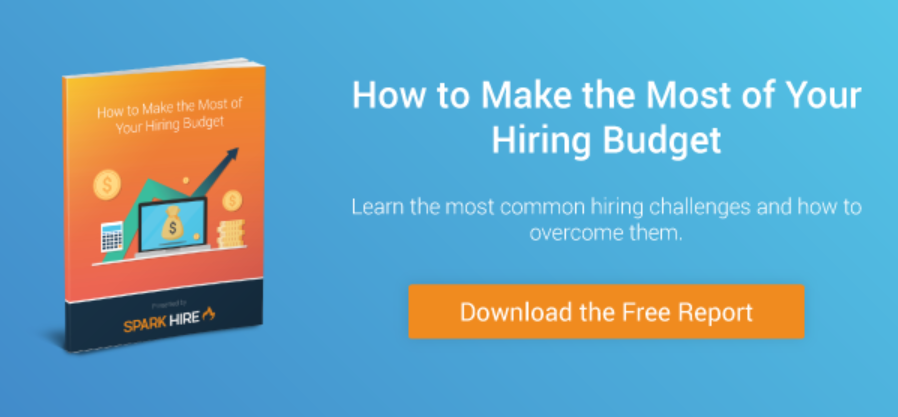Anytime a hire doesn’t work out, it’s not worth it to keep them around and hope they get better. It’s true that starting the interview process all over again is expensive and taxing on your productivity and staff morale. But the only alternative is to keep a bad hire on the team, and those consequences may be equally damaging.
It’s natural to feel some frustration toward that individual for falling short on their promises. However, if turnover becomes a pattern, you have to look at your own role in contributing to it.
In 2015 research from the Brandon Hall Group, 69% of companies agreed that a poor interview process was the cause of low-quality hires.
To assess how changes could improve retention, we kept track of experts’ opinions on alternative approaches to the process from 2015 through 2017.
Remarkably, recent research demonstrates that their years-old advice is still applicable today. Here are the alternative approaches they recommend:
Using predictive analytics
Google has a reputation for securing the top talent in the business. However, for all the talk of how extraordinary they are, their interview process isn’t as complicated as one might expect. In June 2015, Lazlo Block, Google’s former Senior Vice President of People Operations, wrote, “Here’s Google’s Secret to Hiring the Best People.”
Companies have long been in favor of using assessment tests to judge candidates. But Google’s approach uses a combination of assessments to find the best employee.
“Research shows that combinations of assessment techniques are better than any single technique,” Block said. “For example, a test of general cognitive ability when combined with an assessment of conscientiousness is better able to predict who will be successful in a job.”
Block said Google has an internal tool called qDroid. With it, interviewers can indicate the job they’re screening for, select the attribute they want to test, and receive an email with a guide of designed questions to predict performance in that particular position.
Block believes the combination between personality and situational assessments gives “a little nudge toward better, more reliable interviewing.”
However, do keep in mind that predictive analytics cannot completely diminish bias. The deep dive into your metrics of best places to find talent and top traits of current talent is undeniably useful. But that information comes from previous human bias.
You can trust that the candidates your predictive analytics supports are the top ones to look into. But be prepared to use an additional screening tool to filter them through in an unbiased fashion.
For instance, structured, one-way video interviews are quick and easy. They cut down the time it takes to vet candidates while also guaranteeing an objective perspective.
Spotting signs of leadership
It’s essential to think ahead. You might not be looking for a leadership role when hiring for an entry-level position, but whether or not that candidate will make a great leader in the future could have an impact on whether you should hire them from the outset.
In the first iteration of this article, we referenced Saba and Workplace Trends’ 2015 Global Workforce Leadership (GLW) Survey.The survey found that 46% of companies believed leadership skills to be the hardest to identify.
From this data, it is clear that you must become an expert on those skills for long-term success. If you’re looking for new employees to stick in the company, your interview process will need to change to spot leadership potential early on.
However, this is still a concern today. According to the 2021 Deloitte Global Human Capital Trends survey, leadership is the top driver of change. In fact, 60% of executives said effective leadership was the key to preparing for the unpredictable.
The recent survey even revealed that ineffective leaders could be dangerous for the longevity of your company. Issues with leadership, such as prioritization, skills/experience, and visioning, create the biggest barriers to work transformation.
Thus, it’s not enough to build a leadership lens into your process. You must also update your understanding of the responsibilities and needs of your organization’s leadership roles regularly. Developing this awareness will better your ability to select candidates who could step into those upper-level positions and support a hybrid and flexible future. And establishing it as a habit will help you catch when the needs adapt.
Using video interviews
Interviews might not be your idea of a date, but at least one CEO would disagree. Kathryn Minshew, CEO and founder of The Muse, talked about job interviews with Business Insider in September 2016.
The interview presented the parallels between job interviews and dates. She said a mistake she often sees is that people want a job in general, not the specific one they interview for.
“From a hiring manager’s perspective, you’re looking for someone who is excited about this role or this company,” she said. “It’s kind of like dating [and] no one wants to date someone who just wants a girlfriend or boyfriend. People want to be with people who are interested in them.”
As you may have found in recent years, a great way to screen for this is through video interviews. They allow you to see a candidate’s body language, how they handle themselves with tough questions, and their tone. Each of these tells reveals their genuine interest in the job.
In the early days of the pandemic, about 86% of companies turned to video interviewing for their hiring process, according to a Gartner survey from April 2020. The option to return to 100% in-person interviewing will soon be available, but take a hard look at what video interviews have done for your process before deciding to revert to the pre-pandemic status quo.
Maintaining virtual elements in your interview process is vital for screening candidates and ensuring you hire the right people. Remember that it’s also convenient for candidates and saves a lot of your time.
Asking candidates oddball questions
If you’re a hiring manager searching for new talent, you need to put time into finding the right types of interview questions. This habit helps you properly assess candidates for the exact role for which they are interviewing. A lack of good questions is a sure-fire way to extend the time it takes for you to hire someone.
Gene Caballero, the co-founder of Greenpal, suggests asking for what a candidate is passionate about outside of their family. “If a candidate is not passionate about anything, he will not be passionate about working for my company,” he argued.
Curveball questions have become increasingly popular since we spoke with Cabellero in 2017. In fact, Glassdoor just recently interviewed several experts for their take on the trend.
In the article, Susan Ruhl, the President and CFO of ICC, explained their purpose is not to trick or throw off a candidate. Instead, “they are designed to uncover how you think, handle unexpected problems and situations, whether you are a good fit for their culture, and how creative you are.”
Chuck Fried, president and CEO of TxMQ added, “I don’t care about the right answer. I care about the logic someone used to arrive at the answer.”
Indeed, seeing how candidates react to oddball questions seemingly unrelated to the position is an effective method to see how well they think on their feet.
Changing the screening process
In addition to asking oddball questions, learn from influencers who like to shake up the whole screening process. For example, here’s what we learned from three executives in our original outreach:
Robert McGuire, CEO of McGuire Editorial Content Marketing Agency, likes to “plant a ‘paying attention’ test” into the job ad.
“I ask them to do some particular small thing in their application,” he told us. “For writers, I will often ask them to look at an existing article and to suggest one or two follow-up topics as a demonstration of their thinking.”
Angela Copeland, founder of Copeland Coaching, also has a unique process. Copeland said, during the interview process, she’ll have a candidate organize their reference checks.
“They’re asked to walk the future hiring manager through their entire work history and why they left each job.” Copeland claimed it’s a “comprehensive and enlightening” process.
Taylor Dumouchel, a former executive recruiter at Peak Sales Recruiting, said the company made excellent use of structured interviews and scorecards to reduce bias.
Dumouchel explained that the most considerable advantage for having a scorecard is that “when you have done the work to break down the candidate profile and the job profile in terms of measurable attributes, you’ll find more qualified candidates.”
While these tips come from several years ago now, they are still relevant to your interview process. When testing candidates’ attention to detail, thought process, transparency, or credentials, it’s critical to try something unique to keep them on their toes.
Including potential co-workers
When you’re looking for a new candidate to hire, sometimes two or more heads are better than one. Having more than one person evaluate a candidate can be a fantastic way to see how various people perceive the person’s qualifications.
In a 2017 Business Insider interview, Facebook’s global head of recruiting, Miranda Kalinowski, and VP of People, Lori Goler, spoke about their interview process. Kalinowski said after candidates have gone through the multiple interview steps, they turn it over to their employees.
“They’re the closest to the work being done, so they’re able to impart a lot of firsthand experience about what it’s like to work on that team in that role, as well as answer any question the candidate might have,” she said. Facebook looks to make sure they match the right people with the right opportunities.
In the end, your goal is to always look for the best person for the job. Although that can be a tall order for anyone, having the proper process can go a long way. Whether you use assessment-based, new processes, or oddball questions, it will serve you well to switch up your interview process. The more committed you are to sharpening your interview process, the higher the chance you’ll find the perfect candidate for the job the first time.












